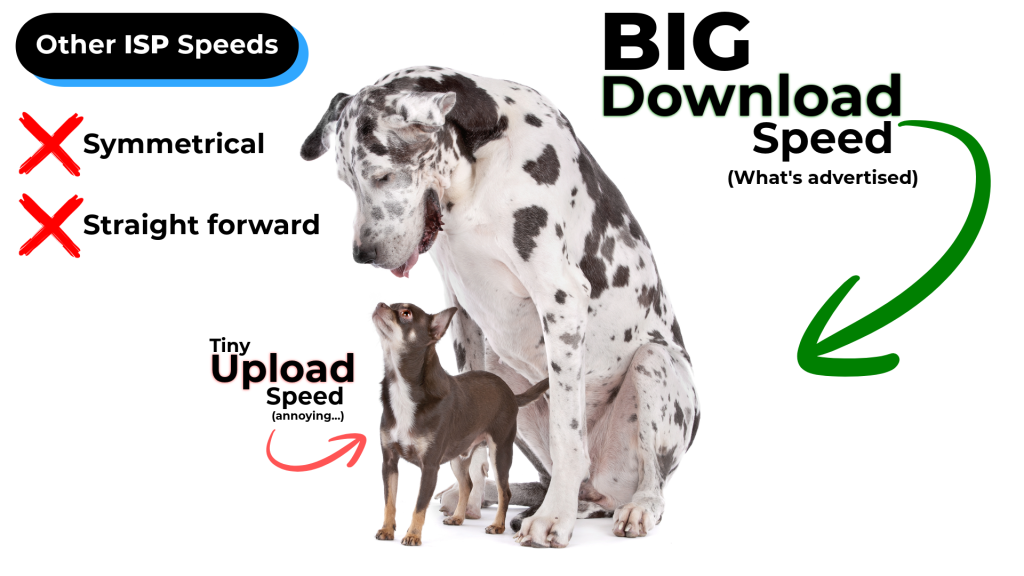As we continue to plot a course through the ever increasingly digital world in 2024, the demand for faster, more reliable internet continues to grow. Among the available options, fiber optic internet stands out as the clearly superior choice for a variety of typical users whether you work from home, participate in remote/digital learning, game or create digital content. Here’s a few reasons why:
- Unmatched Speed. Fiber optic technology can deliver speeds up to 10,000 Megabits per second (Mbps), far outpacing other available alternatives. This allows for seamless 8K video streaming, lag-free cloud gaming, and nearly instantaneous file transfers.
- Symmetrical Upload and Download Speeds. Unlike traditional broadband plans which advertise download speeds but offer substantially slower upload speeds, fiber offers equal upload and download speeds. This type of connectivity is crucial for remote work, video conferencing, and content creation.
- Lower Latency. Fiber’s low latency, often referred to as ping, is a game-changer for real-time applications, virtual reality experiences, and competitive online gaming.
- Reliability. Immune to electromagnetic interference from storms, and less susceptible to other environmental factors, fiber optic cables ensure a more stable, reliable connection.
- Future-Proof Infrastructure. As bandwidth demands increase, fiber’s capacity can be upgraded without replacing the physical infrastructure, making it a smart long-term choice.
- Energy Efficiency. Fiber optic systems consume less energy than traditional copper-based networks, aligning with the growing focus on sustainable technology.
- Enhanced Security. The nature of fiber optic transmission makes it extremely difficult to tap or intercept, providing an added layer of data security.
While 5G and satellite internet have made strides, they still can’t match fiber’s consistency and raw performance. As we look to the future of connectivity, fiber optic internet remains the gold standard for those seeking the best possible online experience.
One of the major advantages of fiber optic internet from Aptitude Internet is the ability to deliver symmetrical speeds. Symmetrical speeds refer to internet connections where the upload speed matches the download speed. For example, when we advertise our top-tier Trailblazer plan, with speeds up to 10,000 Megabits per second (Mbps) that means 10,000 Mbps Download and 10,000 Mbps Upload. This contrasts with asymmetrical connections, which are common in traditional broadband services where download speeds are typically much faster than upload speeds. Check out these handy infographics to help you remember the difference.


Upload speeds are crucial in today’s digital landscape, especially for content creators, remote workers, and anyone who shares large files online.
High upload speeds enable seamless video conferencing, allowing for crystal-clear calls without lag or dropouts. They’re essential for cloud backups, ensuring your data is protected without long waiting times. Content creators benefit greatly, as uploading high-quality videos, large image files, or streaming live content requires substantial upload bandwidth. Online gamers also rely on good upload speeds for responsive gameplay and hosting multiplayer sessions.
Additionally, smart home devices that send data to the cloud, like security cameras and video doorbells (click here to learn more about our Arlo Secure plans) function more effectively with fast and reliable upload speeds. As our digital activities become increasingly two-way interactions, robust upload capabilities are no longer a luxury, but a necessity for many users.
If you’re ready to take advantage of all the benefits of fiber optic internet, check out our internet plans with speeds up to 10,000 Mbps and plans up to 333 Mbps starting as low as $59/mo. Click here to check availability and sign up today.
